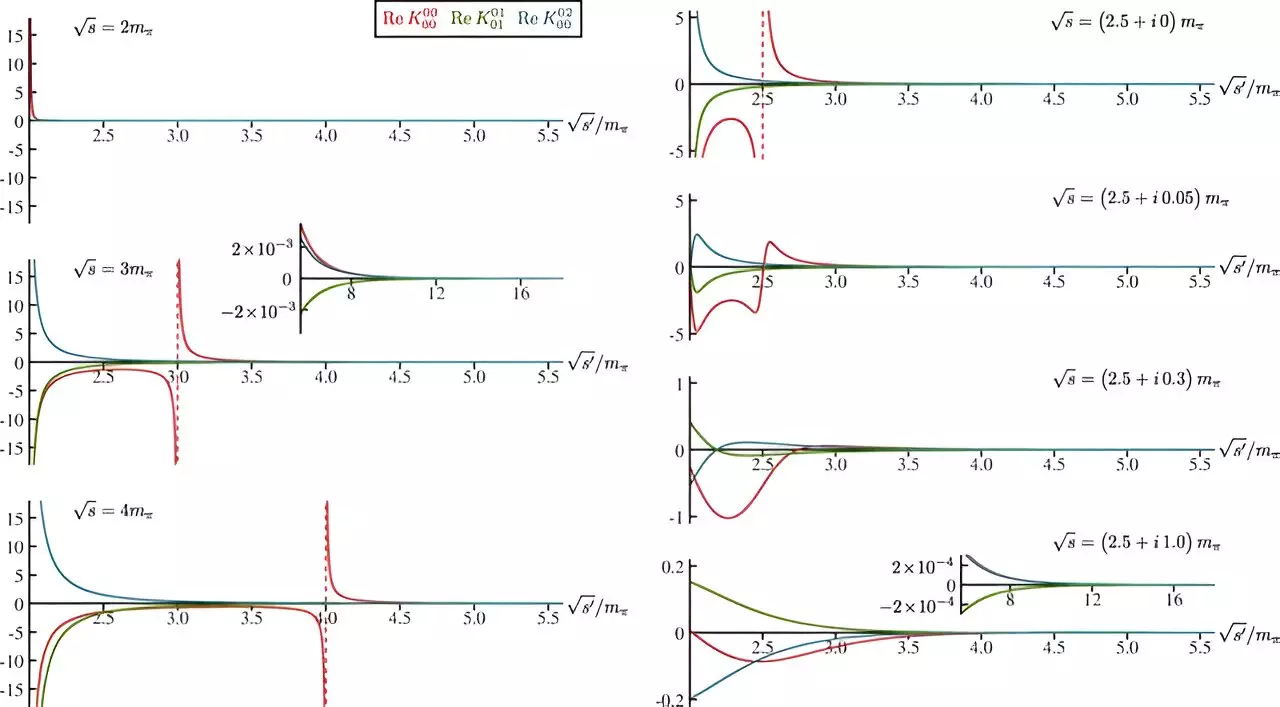The strong interaction is one of the four fundamental forces in nature, playing a crucial role in binding atomic nuclei together. Despite its importance, much about this force and its associated particles remains shrouded in mystery, leading to ongoing research in nuclear physics. Central to this inquiry is the sigma meson, a particle that helps provide insight into the strong force’s mechanics. Recent advancements by researchers at the U.S. Department of Energy’s Thomas Jefferson National Accelerator Facility have shed light on this particle, revealing its critical role in achieving a deeper understanding of fundamental nuclear interactions.
The Sigma Meson: A Fundamental Player
The sigma meson stands out as a crucial yet elusive player within the quantum world. Comprised of quarks, much like protons and neutrons, it forms during the collision of two other quark-based particles, specifically pions. This particle, however, is notoriously unstable—decaying back into pions almost instantaneously—making it a challenge for physicists to study via traditional experimental methods. Jozef Dudek, one of the leading scientists on this research, describes the sigma as a “long-standing weird guy,” highlighting its unique status among particle physics.
Given its mass—roughly half that of a proton—the sigma meson is an essential puzzle piece for discovering why matter persists and how subatomic particles maintain their integrity in the universe. According to Arkaitz Rodas Bilbao, another key researcher, uncovering the sigma’s properties could provide answers to fundamental questions about our existence and the cohesion of matter at the most elemental level.
Supercomputing: A New Frontier for Particle Research
To tackle the challenge of studying the sigma meson, the research team turned to supercomputing—a revolutionary approach that enables the simulation of complex particles and interactions at unprecedented scales. Traditional laptops would require hundreds to thousands of years to perform the necessary calculations, but the power of supercomputers allows for simultaneous processing, drastically reducing the time it takes to achieve meaningful results.
By utilizing supercomputers, researchers conducted simulations of pion interactions to better understand the sigma meson and its behavior. This work hinges on quantum chromodynamics (QCD), the theoretical framework that governs the strong interaction. However, due to the complexities involved, the challenge of overcoming the limitations of QCD was formidable. This scenario called for innovative solutions that would allow physicists to reintroduce previously sacrificed principles, notably through mathematical constraints termed “dispersion relations.”
Collaboration Across Borders and Disciplines
The endeavor to decode the sigma meson serves as a showcase for interdisciplinary collaboration in scientific research. Rodas Bilbao, Dudek, and Robert Edwards exemplified how pooling diverse expertise enables teams to tackle formidable challenges. By leveraging different skill sets, they created a formidable working group dedicated to uncovering unknown aspects of particle physics, forming international collaborations across various laboratories and institutions.
Edwards, who leads a crucial software project under the auspices of the Scientific Discovery through Advanced Computing program, emphasizes the importance of developed infrastructures and algorithms that facilitate advanced scientific computing. This collaborative effort represents a cornerstone of modern research, illustrating how team dynamics drive advances in understanding fundamental questions about the universe.
Future Directions and the Road Ahead
Though progress has been made, the journey to fully comprehend the sigma meson is far from complete. The team’s current findings establish a promising groundwork for future research, particularly in the quest to explore more exotic particles related to the sigma, such as the kappa meson. The properties of the kappa remain even more elusive, and the pathway to studying it demonstrates the critical importance of continued collaboration and sophisticated computational techniques.
As the research evolves, the need to address remaining limitations is paramount. Notably, the current calculations assign higher masses to quarks and pions than are observed in reality. While practical for initial assessments, these discrepancies signal the necessity for future work to refine parameters, inching closer to actual mass values. Achieving this precision could significantly enhance the alignment between theoretical predictions and experimental findings.
The Interconnected Nature of Research and Experimentation
One remarkable aspect of this study is the feedback loop it creates between theoretical research and experimental physics. The insights gained about the sigma meson directly intersect with experimental methodologies, meaning that every theoretical advancement has the potential to inform and refine experimental practices at Jefferson Lab. As Dudek aptly puts it, any experiment involving pions will likely feel the impact of the sigma, embedding this particle at the heart of nuclear physics research.
The initial steps taken towards unraveling the sigma meson’s properties set in motion a cascade of potential discoveries, one that could redefine our understanding of how matter forms the very fabric of our universe. Although the exploration of the sigma meson has only just begun, the implications of this research reverberate throughout the realms of physics, reaffirming the intricate connections woven through the vast tapestry of particle interactions.

